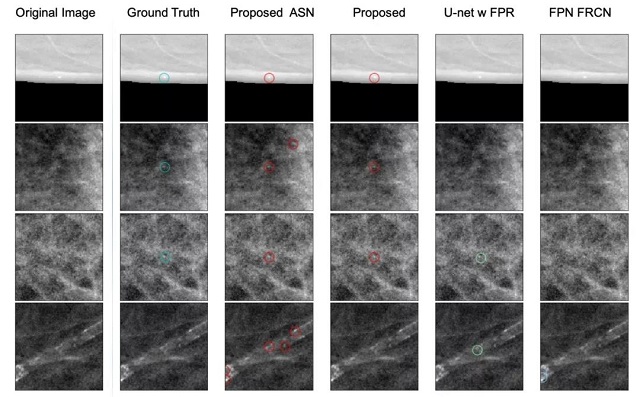[CVPR 2019] Cascaded Generative and Discriminative Learning for Microcalcification Detection in Breast Mammograms
Accurate microcalcification (mC) detection is of great importance due to its high proportion in early breast cancers. Most of the previous mC detection methods belong to discriminative models, where classifiers are exploited to distinguish mCs from other backgrounds. However, it is still challenging for these methods to tell the mCs from amounts of normal tissues because they are too tiny (at most 14 pixels). Generative methods can precisely model the normal tissues and regard the abnormal ones as outliers, while they fail to further distinguish the mCs from other anomalies, i.e. vessel calcifications. In this paper, we propose a hybrid approach by taking advantages of both generative and discriminative models. Firstly, a generative model named Anomaly Separation Network (ASN) is used to generate candidate mCs. ASN contains two major components. A deep convolutional encoder-decoder network is built to learn the image reconstruction mapping and a t-test loss function is designed to separate the distributions of the reconstruction residuals of mCs from normal tissues. Secondly, a discriminative model is cascaded to tell the mCs from the false positives. Finally, to verify the effectiveness of our method, we conduct experiments on both public and in-house datasets, which demonstrates that our approach outperforms previous state-of-the-art methods.

More information
Paper: https://openaccess.thecvf.com/content_CVPR_2019/html/Zhang_Cascaded_Generative_and_Discriminative_Learning_for_Microcalcification_Detection_in_Breast_CVPR_2019_paper.html






